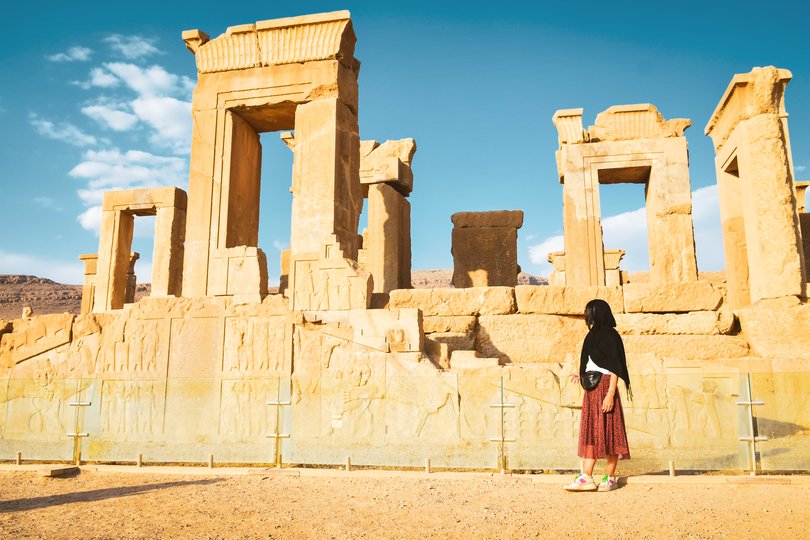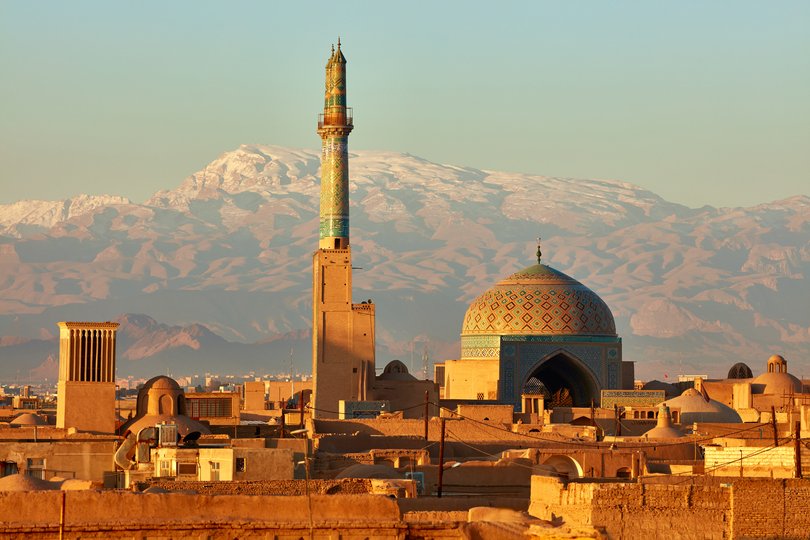Why thousands of Australians are ignoring ‘Do Not Travel’ warnings

They are the countries deemed too dangerous to visit.
But in the past year Australians have made nearly 68,000 trips to places on the Government’s Do Not Travel list, defying warnings they could be kidnapped, arbitrarily detained or find themselves in a war zone or terrorist attack.
Many are residents visiting their countries of birth, but a growing number are tourists seeking experiences in volatile corners of the world or countries ruled by hostile regimes such as Iraq, Afghanistan, Iran or Syria.
Australian Bureau of Statistics data on short overseas trips shows the top destination on Smartraveller’s “Do Not Travel” list is Iran with 19,150 visits by Australian residents between April last year and March.
ROAM. Landing in your inbox weekly.
A digital-first travel magazine. Premium itineraries and adventures, practical information and exclusive offers for the discerning traveller.
By continuing you agree to our Terms and Privacy Policy.That’s despite the high-profile cases of Australian academic Kylie Moore-Gilbert (in 2018) and Perth travel bloggers Mark Firkin and Jolie King (in 2019) being arrested by the regime in cases described as, “hostage diplomacy.”
Even though the Government’s Smartraveller website puts Iran in the top danger category of level 4, Australians who have visited the country say it is one of the safest places they have ever visited.
One of those travellers is New South Wales woman, Leigh Swansborough, 53, who walked solo across Iran from the Persian Gulf to the Caspian Sea to, “show the West what they had never seen in thirty-second news sound bites — the humanity of Iranians.”
Ms Swansborough — who has lived overseas for 36 years — said her friends feared she would be killed by Iranians.
“Iranians killed me with kindness and the walk that I did across Iran I would never have done living in the (United) States,” she said.
The experienced adventurer completed most of the south-to-north trek through the heart of the ancient Silk Road in 2022, wearing an Australian jersey and carrying her luggage in a pushcart she named “Allie.”

Ms Swansborough said she was very aware of the risks of visiting Iran.
“When I did my research for walking across Iran I noticed five categories that increased my risk for hostage diplomacy — dual nationals, journalists, academics and scholars that have publicly scrutinised and criticised the regime and Overlander’s camping in restricted military zones and using drones.”
In 2022, Ms Swansborough was just 30 kilometres from her goal of the Caspian Sea when Iran caught fire in a blaze of protests against the regime following the death of a young woman, Mahsa Amini, 22, in police custody.

Her death led to months of protests, hundreds of deaths and tens of thousands of people being arrested.
In the growing civil unrest, Ms Swansborough quickly left the country. She returned in July to complete her walk.
One Australian travel company, Patch Adventures — which specialises in women-only tours — has taken 42 Australians to Iran in the past three years.
Patch Adventures co-founder Mat Newton said his client base tends to be “well-educated and world-aware.”
“...our guests often have family and friends who are nervous, but we just encourage them to do some research of their own. It’s not hard in 2024 to figure out what going to Iran is truly like. The internet is full of many happy people singing its praises.
“In addition, I would say that Joanne Lumley’s Iran television had a huge impact as many Australians just had no idea that Iran was such a nice place to visit. (celebrity chef) Anthony Bourdain also opened a lot of people’s eyes.”
At the time of print, there were 23 countries on Smartraveller’s Do Not Travel list. The overwhelming majority (76 per cent) of the 68,000 travellers visiting those countries were going to just four destinations; Iran, Iraq, Lebanon and Afghanistan.
That included a retired geologist from Sydney, who declined to give his name, who went to Mosul in northern Iraq earlier this year to see the ruins of the ancient Assyrian city of Nineveh.


He may have visited the extraordinary 7000-year-old ruins but he has no photos to remember it by because the Kurdish Peshmerga, who controls that region, warned him not to take pictures.
“We were only allowed in a corner of the area. The rest is controlled by the Kurdish (forces) and they said don’t take photographs.”
The geologist said he never checks the Smartraveller website but was not surprised that Iraq had a level four danger rating.
“But saying that I have never felt in any danger in any of these places. I mean, places like Barcelona at one o’clock in the morning are way dodgier,” he said.
Emergency response and crisis management consultant Anthony Moorhouse specialises in assisting travellers in volatile parts of the world.
The director of strategy at Executive Risk Solutions said many of his clients were travelling for work.
“ASX mining companies are travelling into these level 4 countries because that’s where the projects are — they just add risk mitigation into the equation.
“There are a lot of aid workers, that is a really significant contingent because the very places that are these level four countries are the ones that are in need of this humanitarian support.
“When there’s a natural disaster or conflict or a bombing the plane would be full going both ways. We have journalists and aid workers going into the situation as normal people are going out of the situation.”
“The reason that the Department of Foreign Affairs and Trade does this (advise people not to travel) is because when there is an incident there are less Aussies there.”
A DFAT spokesperson said no Australian should travel to countries that have Level 4 travel advice.
“In these locations, you face very serious risks such as armed conflict, terrorism, kidnapping, violent crime or arbitrary detention. You could die or be seriously injured and your family would face very high costs of repatriating your body or arranging your medical evacuation. Most travel insurance policies won’t cover you for ‘Do Not Travel’ destinations
“If you get into trouble, the Australian Government may be unable to help. Our ability to provide consular assistance in these destinations is extremely limited.”
According to DFAT’s State of Play report there were 740 Australians arrested overseas from 2022 to 2023 with 26 per cent of those in China. The top destination for Consular assistance was Thailand.
Originally published on The Nightly
